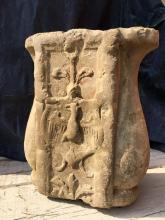Castle Collector
Janos I was the eldest son of Laszlo Podamiczky, commander in the Black Army and member of the Royal Council under King Matthias Corvinus. Janos was the only son born of Laszlo's first marriage to Magdolina Galszechy. Of the three brothers he seems to be the most ambitious and politically astute. Unlike his father, he was not completely devoted and loyal to King Mathias. He may have even participated in a minor rebellion against the king and was probably pardoned in part due to his father's influence in the royal court. Laszlo died in 1489 as did King Matthias in 1490. It is clear from what happened afterwards that Janos was one of the many barons who resented the autocratic rule of Matthias because although Matthias exacted a pledge from the barons to crown his illigitimate son, John Corvinus, as king after he died, Janos did not do so. Like many of the magnates he rallied behind and fought for Wladyslaw, the King of Bohemia to become King of Hungary. He was elected and crowned in 1490. However, Maximillian Habsburg King of the Germans (soon to be Holy Roman Emperor) also claimed the throne and invaded Hungary.
Janos Podmaniczky assembled a personal army of 5000 soldiers to help defeat Maximilian, reclaiming Kasza Castle in 1491. For his service he was rewarded with a high place on the Royal Council. He became a close personal advisor to the new king and his wife, Queen Anne.
As a reward for his service, the king gave Janos many estates and town and the castles of Su'lov, Strecno, Lednica and Szuca. He bought Hrico Castle from his cousin, the son of Balazs Podmaniczky. He already owned the castles of Beszterce,(aka Povazska-Bystrica), Budatin, and Bytca.



